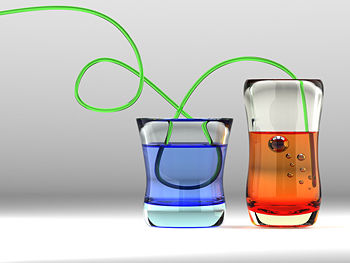Let us consider the scenario where an annotated content travels through nodes on the Web. Any node can replicate this content, modify it, cut it into subparts to be mixed with other contents, and so on. This is a Fluid Web notion, where the Web is taken as an environment suitable for distributed and collaborative work and where the partners involved in the collaboration change with time. This notion contrasts with the traditional Web scenario. It demands an extension of Web mechanisms to reference and annotate other kinds of digital content beyond Web documents, and to identify and relate replications and derivations of content objects through the Web.
The Web is evolving from a space for publication/consumption of documents to an environment for collaborative work, where digital content can travel and be replicated, adapted, decomposed, fusioned and transformed. We call this the Fluid Web perspective.
This view requires a thorough revision of the typical document-oriented approach that permeates content management on the Web. Our solution for the Fluid Web allows moving from the document-oriented to a content-oriented perspective, where "content" can be any digital object. The solution is based on two axes: a self-descriptive unit to encapsulate any kind of content artifact - the Digital Content Component (DCC); and a Fluid Web infrastructure that provides management and deployment of DCCs through the Web, and whose goal is to support collaboration on the Web.
Designed to be reused and adapted, DCCs encapsulate data and software using a single structure, thus allowing homogeneous composition and processing of any digital content, be it executable or not.
A Digital Content Component (DCC) is composed of four distinct subdivisions:
- the content itself,
- the declaration of a management structure that defines how components within a DCC relate to each other,
- a specification of the DCC interfaces, and
- metadata to describe version, functionality, applicability, use restrictions, etc.
Since DCC is a lightweight implementation, its model was ported to many languages: Java, JavaScript and PHP. We are planning to port it to other languages in the future.
 Glass is Liquide by Mehran Moghtadai
Glass is Liquide by Mehran Moghtadai